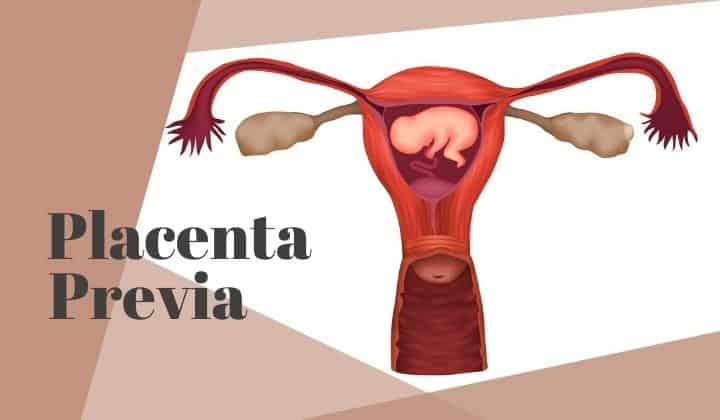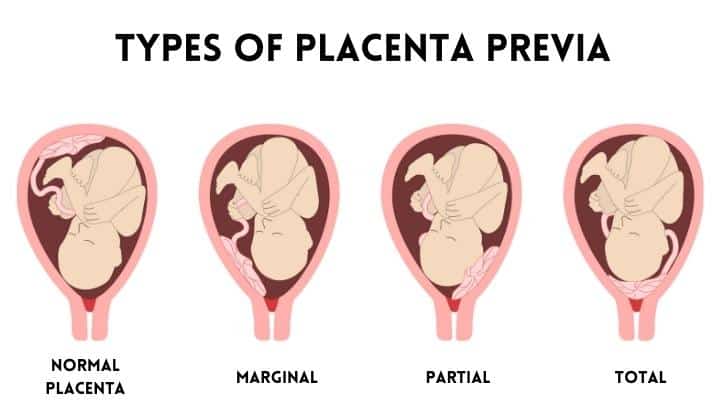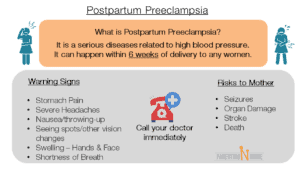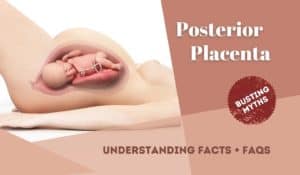Medically Reviewed by: Dr. Veena Shinde (M.D, D.G.O, PG – Assisted Reproductive Technology (ART) from Warick, UK) Mumbai, India
-
Author: Palak Thakkar
- >> Post Created: December 27, 2021
- >> Last Updated: May 2, 2024

Table of Contents
A placenta is a new organ that a woman’s body develops when she gets pregnant. This sac-like organ comes into existence only to provide nutrition and oxygen to the baby and protect it by removing waste products from the baby’s blood.
The placenta then detaches itself from the uterus and exits the mother’s body after the baby is born; therefore, it is also called as ‘afterbirth.’ However, the placenta position can sometimes be a major cause of concern.
The placenta attaches itself to the uterus either to its front, back, or on the top. The concern arises when the placenta is positioned at the lower part of the uterus, covering the cervix (opening of the womb) partially or fully. The condition may give rise to some complications in the later part of pregnancy, but with the right knowledge and guidance from your doctor, the baby can be delivered safely.
To understand this condition better, read on…
What is Placenta Previa?
Understanding Placenta Previa can be easier to understand by its common name – Low lying placenta previa. As the name suggests, the placenta position in this case is on the lower side of the uterus.
Now placenta on the lower side of the uterus in early pregnancy is normal. However, as the baby grows inside the womb, the uterus also expands and the placenta, which is attached to the uterine wall, eventually shifts upward (away from the cervix) for the delivery. In fact, in ideal cases, the placenta moves to the top of the uterus by the third trimester, leaving the cervical opening clear for the baby’s birth.
Low lying placenta previa or Placenta Previa is when the placenta continues to stay on the lower side of the uterus even in late pregnancy stages, moving only to cover the opening of the womb partially or fully.
Women with placenta previa are recommended bed rest for complete pelvic rest. This also means refraining from sexual intercourse, exercises that may put pressure on the pelvic floor or avoiding any actions like an obstetrical check for dilation.
Types of low lying placenta previa

Any placenta position leans either to the anterior or the posterior side of the uterus. Similarly, a low lying placenta can also be categorized based on its accurate location and position with the uterus. Placenta Previa can be of four types:
- Low Placenta: This is usual in the initial stages of pregnancy. This low placenta usually moves upward by the 12th week of pregnancy as the uterus expands to accommodate the growing baby.
- Partial Placenta Previa: As the name suggests, this is when the placenta covers the opening of the womb (uterus) partially.
- Complete/Total Placenta Previa: The placenta in this case completely covers the opening of the uterus.
- Marginal Placenta Previa: This is when the placenta settles very close to the opening of the uterus, but does not cover it, neither partially nor completely.
In cases of partial placenta previa and total placenta previa, there is high possibility of vaginal bleeding during pregnancy, which may or may not be painful.
It also gives rise to the likelihood of bleeding during labor or delivery or even few hours after childbirth (postpartum hemorrhage), which can be life-threatening for the mother.
A low placenta can also result in pre-term birth.
According to a study conducted by the NCBI, it was found that of the 366 low lying placenta cases they examined, about 84% were complete placenta previa. It was also observed that in about 98% of the partial placenta previa cases, the placental position had changed and rectified before 34 weeks of gestation.
Symptoms linked with low lying placenta previa
The foremost symptom of placenta previa is unexpected vaginal bleeding, which could be light or heavy. Even light bleeding should be reported to the doctor as this will need immediate medical attention. Other symptoms include:
- Sharp pains or cramps in the abdomen
- Bleeding after intercourse
- Intermittent bleeding
- Bleeding during the latter half of the pregnancy
Read this next
Risk factors which lead to developing Placenta Previa
There are several factors that can increase the chances of low lying placenta previa in the mother.
- Large placenta
- Abnormally-shaped uterus
- Being pregnant again
- Age being above 35 years
- Carrying twins or other multiples
- Prior miscarriage
- Previous surgeries involving the uterus; C-section delivery, dilation & curettage (D&C) or surgery to remove uterine fibroids
- Placenta Previa in previous pregnancies
- Uncommon position of the baby; Breech (head on top, feet towards the womb opening) or transverse (baby lying horizontally in the womb)
It has been noticed that Placenta Previa is more common in women who smoke or use cocaine and in women who are of Asian descent.
How is Placenta Previa diagnosed?
In most cases, the initial signs of low lying placenta previa can be seen in the routine 20-week ultrasound scan. However, usually this is no reason for worry as it is normal that the placenta is located on the low side of the uterus initially. As the baby grows, the uterus expands and the placenta keeps shifting higher in position. Alarm bells should ring if the placenta has not started shifting upward in the coming weeks, which can then turn into placenta previa.
To understand what are the chances that placenta previa can turn into a concern, take a look at a study conducted by the Royal College of Obstetricians and Gynecologists; merely 10% of women with low lying placenta at 20 weeks (which is usual) continue to have a low lying placenta even at the time of their next ultrasound. And simply 0.5% of these women will end up having placenta previa by the end of their pregnancy.
However, if you notice the symptoms mentioned above, do report it to your doctor. Doctors can then monitor the placenta position using one of the following methods:
- Transvaginal ultrasound: The doctor investigates inside the vagina through an ultrasound to get an inside view of the vaginal canal and the cervix (opening of the womb). This is the favored method to determine placenta previa as it is proven to be the most accurate.
- Transabdominal ultrasound: This is the normal way to get an ultrasound, wherein the healthcare technician applies gel on the abdomen and then slides the handheld instrument called the transducer around the abdomen to get a view of the pelvic organs through ultrasound.
- Magnetic Resonance Imaging (MRI): This clearly establishes the placenta’s location around the uterus.
Treatment of Placenta Previa
There is no medical or surgical remedy for placenta previa as such. The treatment of the condition actually involves management of the bleeding and delivering the baby safely, while keeping the mother safe.
Placenta previa cases may differ; therefore, doctors decide on its method of treatment based on the following:
- The amount of bleeding
- The number of months into pregnancy
- The baby’s overall health
- The exact position of the placenta and the baby
The amount of bleeding is the leading factor considered by doctors to decide the treatment method placenta previa.
If a placenta previa case has minimal or no bleeding at all, then the doctor is likely to recommend pelvic rest. In this, the mother-to-be has to refrain from putting anything into her vagina (avoiding sex) and exercises that may put any pressure on the pelvic region. If there is bleeding at this time, then immediate medical attention should be sought.
If a placenta previa case experiences heavy bleeding, then the doctor may recommend preparing for a caesarean delivery as soon as the baby is ready to be delivered – ideally after 36 weeks into pregnancy. If the situation calls for an earlier C-section delivery, then the baby may have to be given corticosteroid injections to accelerate its lung growth.
Uncontrolled bleeding in placenta previa means an emergency C-section delivery.
If the placenta previa condition does not resolve naturally during pregnancy, then the treatment will aim at delivering the baby as close as possible to the due date. Mothers with placenta previa always need a caesarean delivery. However, a low lying placenta that does not cover the cervix may allow vaginal delivery; this can be discussed with the doctor.
Placenta Previa Complications
When the mother-to-be goes into labor, the cervix opens to let the baby move out into the vaginal canal and ultimately come into this world. However, if the placenta blocks the cervix, it will begin to separate as the cervix opens for the baby, which can cause internal bleeding. This situation demands an immediate C-section delivery even if the baby is pre-mature to save the mother’s life which can be in danger due to excessive bleeding.
Vaginal birth in case of complete or partial placenta previa is not possible, as it can cause severe hemorrhaging during labor or the delivery or even after a few hours after childbirth.
A mother-to-be with placenta previa will be monitored closely by the doctor to reduce the risk of these serious complications.
Coping and support for pregnant women
It can be very distressing for a pregnant woman to be diagnosed with placenta previa. We provide you with some tips to not let this thought takeover the joy of being pregnant. It may be a difficult situation, but definitely not hopeless! It is vital that you try to remain stress-free and relaxed when you are carrying a baby.
- Be informed. Knowledge is always power. Understanding your condition will help you deal with it better. Try to contact women who have experienced placenta previa and learn from their experiences.
- Prepare yourself for C-section. You may have wanted a normal vaginal delivery, but remember the fundamental objective – your baby’s and your health.
- Rest! Doctors insist on pelvic rest when diagnosed with placenta previa. This includes avoiding any kind of strenuous activity, especially the ones involving the pelvic region. Nevertheless, do not allow this to frustrate you; instead engage in simple, small activities like reading/watching videos about motherhood and the lifestyle changes it will demand, putting together a photo album, maintaining a gratitude journal, etc.
- Pamper yourself. Treat yourself to a new, comfortable outfit or a facial or anything that makes your heart happy. Keeping your mind distracted by watching your favorite shows, etc. can also work.
- Keep in touch. The support and time from family & friends always works miracles in a situation like this.
Preparing for your appointment
For low lying placenta previa, your alarm bells should ring if you are at least 12 weeks into pregnancy and notice vaginal bleeding. Call your doctor immediately to receive appropriate medical care depending on the symptoms, the time into pregnancy and your medical history.
For your appointment with the doctor for low lying placenta previa, you may want to keep these things in mind:
- Enquire about pre-appointment restrictions: Usually a placenta previa case will get a quick appointment. However, if the appointment is delayed for some reason, enquire about the precautions you need to take till you see the doctor.
- Ensure to take a family member or friend along: Not just for moral support, but also so that they can support you in gathering and remembering information from the doctor.
- Make a list of all the questions: Having all questions ready can ensure you clarify all your doubts with your doctor. Here’s a basic list of queries you can ask your doctor –
- Can my placenta previa condition resolve on its own?
- How will my bleeding be managed?
- What kind of follow-up care is needed during the remaining pregnancy period?
- What are the activities and foods that I should avoid and for how long?
- What are the other symptoms that need to be immediately reported to the doctor and which symptoms need you to go to the hospital?
- Is a vaginal delivery possible for me?
- Does this condition increase my risk of complications in future pregnancies?

With low lying placenta previa, you should never hesitate to ask any doubts or questions that you may have.
On the other hand, your doctor will enquire about your condition by asking you about the time you noticed vaginal bleeding, the frequency of bleeding, if it is heavy or light, and if the bleeding is accompanied by any kind of pain or contractions.
The doctor will also want to know about your medical history; about your previous pregnancies, if any, any kind of uterine surgeries in the past, etc. It is also necessary for the doctor to know how far you live from the hospital, so that they know how long it will take for you to reach the hospital in case of an emergency. They may also enquire whether you have anyone to take complete care of you if they advise bed rest.
Common FAQs
A) Is low lying placenta previa common?
Most women, about 90% who have a low lying placenta previa at 20 weeks of pregnancy will not continue to have it in the latter part of the pregnancy. Only one in 200 women have placenta previa till the end of their pregnancy.
B) Is there anything I can do to help my placenta move up?
As much as we would like that, it is not possible. Just try to stay as healthy as you can and get the recommended rest to ease any complications that may arise. You may need a few extra scans, so ensure that you do not miss any antenatal appointments and follow your doctor’s advice thoroughly.
C) What is a low lying placenta?
When a placenta develops in a pregnant women’s body in the first few weeks of pregnancy, it usually attaches itself with the uterus on top, back or sides. However, in some women the placenta places itself on the lower side of the uterus, blocking its opening partially or completely.
In most cases, when the placenta is low lying, it starts moving up after 20 weeks of pregnancy, thanks to the growing baby and the uterus that expands due to it. When the low lying placenta does not move up, it is a low lying placenta previa.
D) What is the difference between placenta previa and low lying placenta?
As the pregnancy advances, if the placenta’s edge is less than 2 mm away from the cervix, then it is called a low lying placenta. If the placenta completely covers the cervix, then it is total placenta previa and if it covers the womb opening partially, then it is partial placenta previa.
E) When does low lying placenta cause bleeding?
With every day of pregnancy, the cervix effaces or thins out and opens up for the body to train for labor. The uterus too stretches and expands to accommodate the growing baby, resulting in thinning of the organ.
Now when a woman has placenta previa, the blood vessels that link the placenta and uterus can tear due to effacement and dilation, which in turn can cause bleeding. If not given immediate medical attention, it can lead to hemorrhage.
F) Can low lying placenta cause abdominal pain?
Bleeding any time after the 20th week of pregnancy is usually placenta previa. Though bleeding in this condition is mostly reported to be painless, uterine contractions and pain in the abdomen are possible too. You should seek urgent medical attention if you experience abdominal pain during pregnancy.
G) Is low lying placenta high-risk?
Low lying placenta is usually not high risk, especially if it is discovered and treated early in the pregnancy or even in the 22nd week. In fact, about 90% women who have a low lying placenta at 20 weeks of pregnancy will not continue to have so in the latter part of their pregnancy, and it probably get resolved by the 34th week. Only one in 200 women have placenta previa till the end of their pregnancy. It is considered high risk only if it doesn’t get resolved by the end of the third trimester of pregnancy or if it is complete or partial placenta previa, which is a possibility in 10% of the cases.
I) Are there any signs to show that the low lying placenta has moved?
No, there aren’t any physical signs indicating if the low lying placenta has moved; it can only be done through ultrasound scans and the likes.
J) Can placenta previa cause stillbirth?
The placenta previa condition can cause heavy vaginal bleeding during pregnancy or labor or even a few hours after childbirth. This is turn increases the chances of hemorrhage in mothers, which can put the baby at risk too.
However, this is uncommon and most of the women go on to deliver healthy babies even with this condition by following the doctor’s instructions.
Conclusion
A low lying placenta may not be a big cause of concern initially because it shifts upward as the pregnancy advances. Similarly, a marginal placenta too is not much of a worry.
On the other hand, partial and complete placenta previa conditions call for much more rest, care, precautions and monitoring.
The good news is that in spite of all this, even a compete placenta previa can shift upwards by the 32nd week in pregnancy, making way for a smoother delivery.
Although placenta previa should put you on the alert, it is still quite likely that by following the doctor’s instructions will help you deliver your baby with minimum or possibly even no complications.
Keep the faith and always look at the ultimate goal – a healthy baby and a healthy mother!










